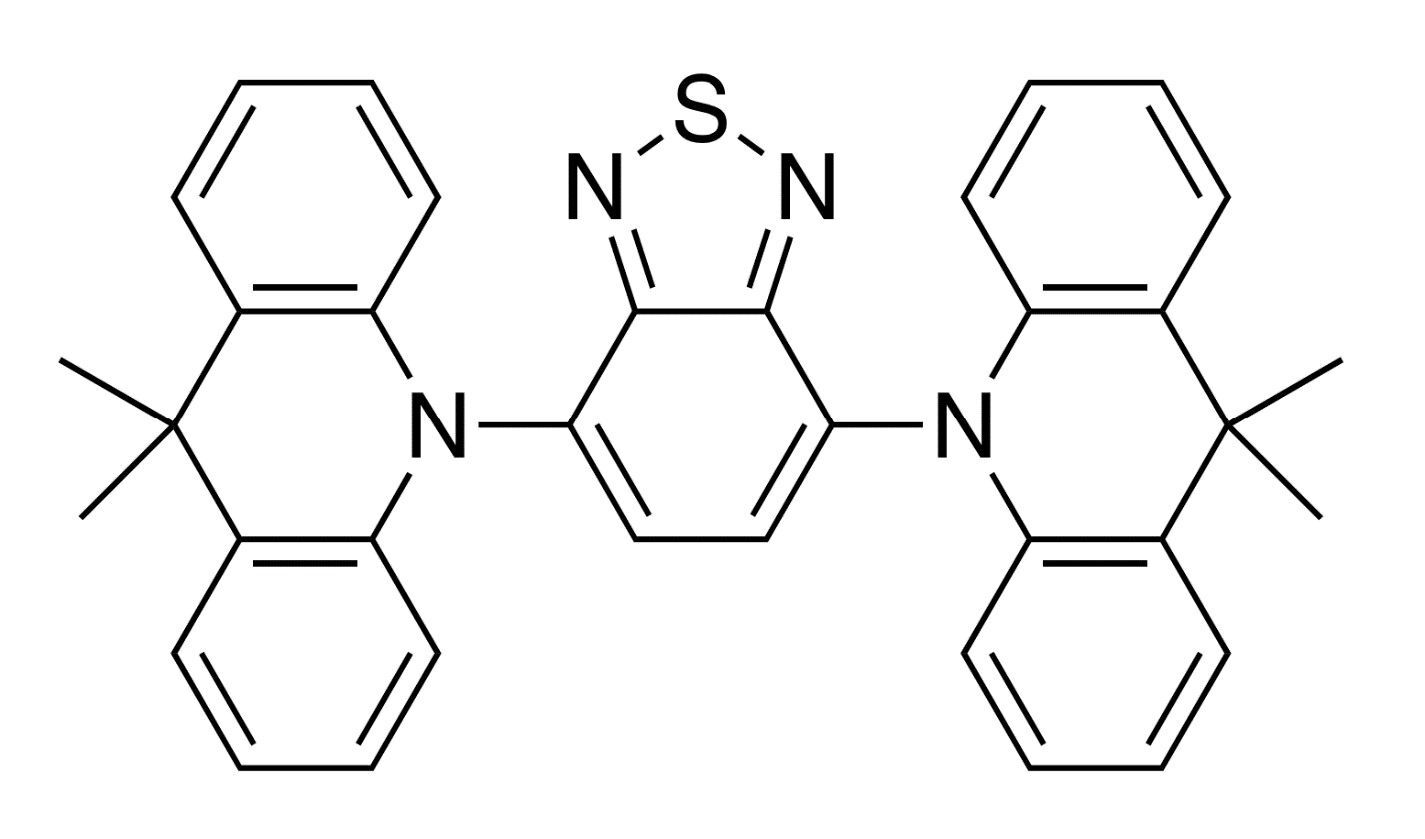BTZ-DMAC
Product Description
BTZ-DMAC, formally identified as 4,7-Bis(9,9-dimethylacridin-10(9H)yl)benzo[c][1,2,5]thiadiazole, is a meticulously designed organic compound that integrates benzo[c][1,2,5]thiadiazole with dimethylacridinyl moieties. This combination results in a molecule with unique electronic and optical properties, making BTZ-DMAC a promising candidate for applications in organic electronics. Its structure is optimized for efficient charge transport, which is essential for boosting the performance of electronic devices such as OLEDs (Organic Light Emitting Diodes) and solar cells. Moreover, BTZ-DMAC demonstrates robust thermal stability and solubility, further enhancing its suitability for integration into various electronic materials and systems.
Application
In the realm of organic electronics, BTZ-DMAC is primarily leveraged for the enhancement of OLED technology and photovoltaic cell performance. Its molecular design inherently supports efficient charge transport, a critical factor in achieving higher device efficiencies and extended operational lifespans. Additionally, the thermal stability of BTZ-DMAC enables its use in high-temperature environments, broadening its applicability in the development of durable electronic components. Its solubility ensures ease of processing, facilitating its incorporation into a wide range of electronic materials.
Articles:
- Recent Progress of Highly Efficient Red and Near-Infrared Thermally Activated Delayed Fluorescent Emitters
Publication Date: 27 June 2018
Ji Han Kim, Ju Hui Yun, Jun Yeob Lee
https://doi.org/10.1002/adom.201800255
- Teaching an old acceptor new tricks: rationally employing 2,1,3-benzothiadiazole as input to design a highly efficient red thermally activated delayed fluorescence emitter
Publication Date: 12 Jan 2017
Fan Ni, Zhongbin Wu, Zece Zhu, Tianheng Chen, Kailong Wu, Cheng Zhong, Kebin An, Danqing Wei, Dongge Ma and Chuluo Yang
https://doi.org/10.1039/C7TC00025A
- Self-Assembled Peptide-Based Nanoprobes for Disease Theranostics and Disease-Related Molecular Imaging
Publication Date: 22 August 2019
Chunhua Ren, Zhongyan Wang, Qian Wang, Cuihong Yang, Jianfeng Liu
